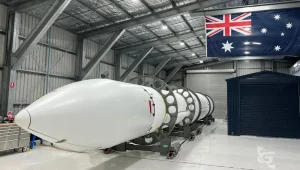Australian startup Gilmour Space Technologies has secured $55 million Australian dollars ($36 million) in a Series D funding round, as announced on February 19. This investment is intended to support the company's efforts in manufacturing, testing, and launching rockets and satellites from the Bowen Orbital Spaceport in North Queensland.
Gilmour Space, founded in 2012, is currently developing a three-stage rocket named Eris. According to a news release from Gilmour Space, the first test flight of Eris is expected “in the coming months, pending launch approvals from the Australian Space Agency.” Subsequently, a second test flight is planned for later this year, with commercial launches scheduled to commence in 2025.
The Series D funding round was led by Queensland Investment Corporation, with participation from Blackbird, Main Sequence, HostPlus, and Australian pension fund HESTA. Adam Gilmour, CEO and co-founder of Gilmour Space, expressed gratitude for the support from these investors, stating, “We are fortunate to have the backing of high-caliber investors who share our vision of providing reliable and affordable access to space.”
Patrick Christiansen, private equity investment director for Queensland Investment Corp., highlighted Gilmour Space's potential as a full-stack launch services provider, saying, “Gilmour's ability to compete as a full-stack launch services provider will be a strong value proposition for an underserviced segment of the global space market.” He also noted, “Gilmour's ability to offer customers a turnkey solution with both launch services and a satellite bus is a key competitive advantage.”
Gilmour Space, headquartered near Brisbane, Australia, previously raised about $46 million in a Series C round in 2021. Rick Baker, co-founding partner of Blackbird, praised the company's progress, stating, “The achievements of the team in taking that technology through years of testing and iteration are coming to a head now.” Baker added, “The Series D funding will allow Gilmour to attempt multiple launches and to become the first Australian-built rocket to get to orbit.”
